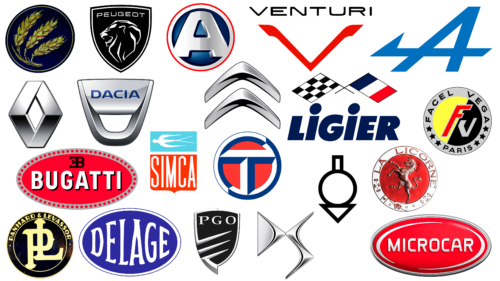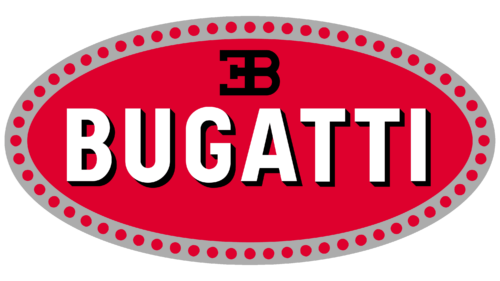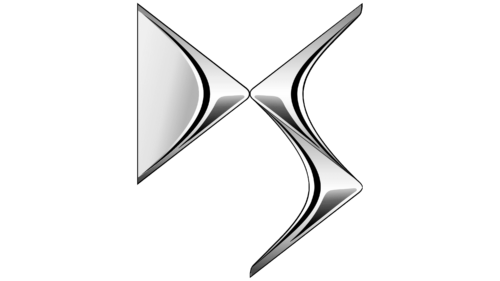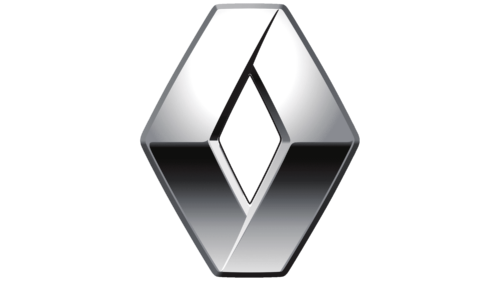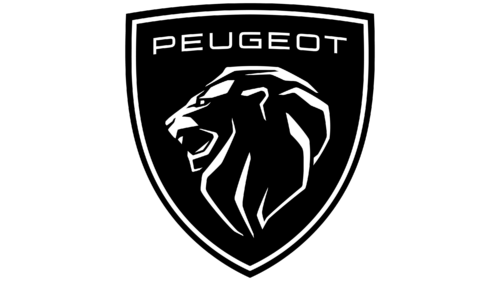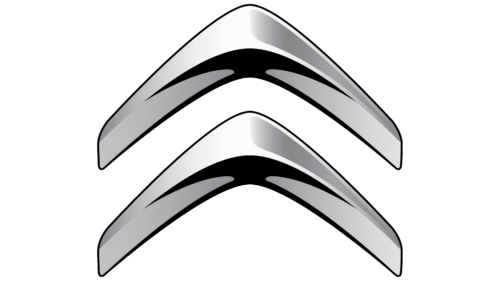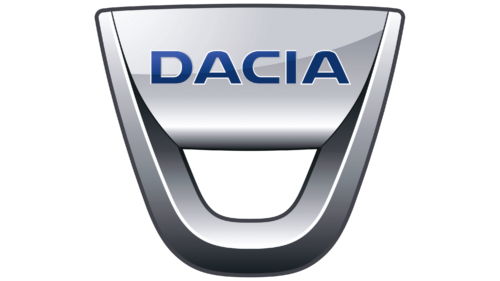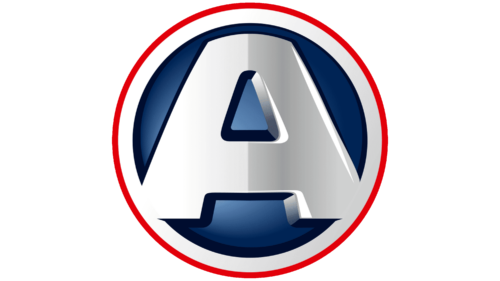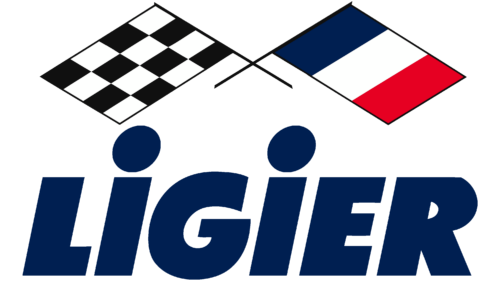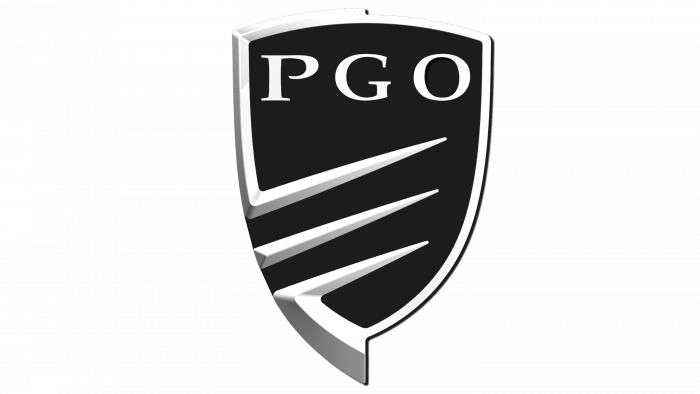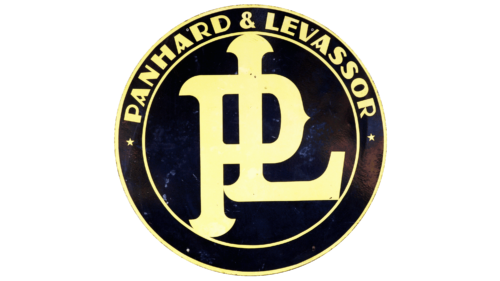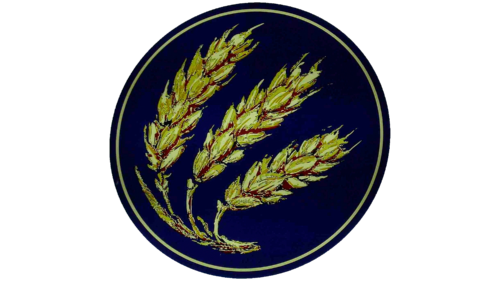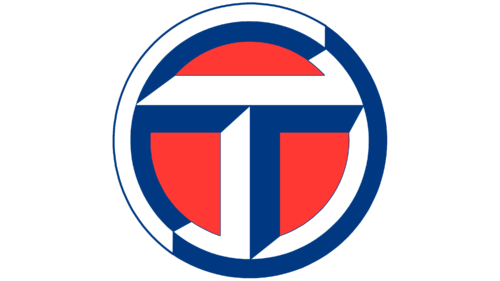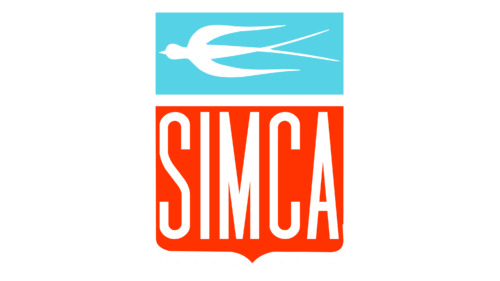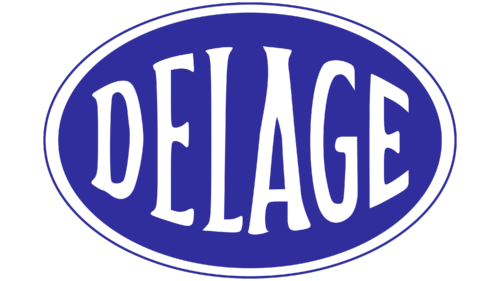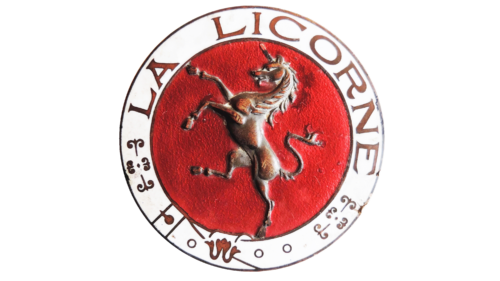France’s automotive industry is one of the oldest in the world and ranks among the top three, behind only the specialized industries of Germany and Spain. It cannot be otherwise since the birthplace of steam engines is a potential reference point for the entire global automotive industry. We can say that transportation technology literally “came out” of France.
The proof of the leading position is many well-known brands abroad, whose cars are a coveted mark of prestige. Renault, Peugeot, Citroën, Valeo, and Bugatti are only a small part of the popular brands on whose cars half the world travels.
What are French car brands?
The most prominent representatives of the French car industry are two companies: Groupe PSA and Renault Group, which own the main brands. However, the former was abolished in 2021, becoming part of Stellantis NV Corporation, which is registered in the Netherlands. So now the Citroën, Peugeot, and DS brands are owned by a Dutch manufacturer, although they remain French.
At the same time, there are far fewer French car brands than British ones, as the French are not quantity-oriented. Only two major representatives of the country’s automobile market have taken over the state reins of the French car industry. These are PSA Peugeot Citroën, which produces Citroen and Peugeot cars, and Renault, which produces the Dacia and Renault passenger car brands.
Supercar Brands
This category is represented by a single-car brand – Bugatti. The key features of its models are the atmosphere of luxury, ergonomics, beauty, and convenience. In addition, they are characterized by exceptional design and technical characteristics. Dynamic performance is particularly high, as supercars are the top segment of a broad class of sports cars. Engine power is calculated in hundreds of horsepower, and the maximum speed is 300 km / h. Naturally, the cost is also maximum. And another thing: For all representatives of this category, exceptional tuning is important, which they can boast about.
Bugatti
The automaker specializes in car production: design, assembly, tuning, production, and sale. The company entered the market in 1909, firmly occupying its niche despite the founder – Ettore Bugatti, a designer with Italian roots. Having passed a difficult path, the brand survived and came into the Volkswagen Group’s possession (in 1998). It practically revived it and breathed a second life into the iron “shell,” under which unprecedented power, beauty, and grace are hidden. The brand is currently called Bugatti Automobiles SAS.
Luxury Car Brands
The French luxury car sector is represented by just one brand, Citroën. It designs and assembles elegant cars that please the eye and are characterized by increased driving comfort. This criterion lies at the heart of the French car industry. The French are characterized by a clear combination of beauty and practicality: it is extremely important to them how transport equipment drives and looks. DS models are characterized by true French chic.
DS
Groupe PSA creates the premium brand and is a sub-brand of Citroën. It was formed in 2009 under an abbreviated name that, depending on the source, stands for “Distinctive Series” or “Different Spirit.” Besides, there is another meaning hidden in the dry “DS.” In French, the two letters are pronounced “déesse,” meaning “goddess.” In 2015, the luxury series became an independent entity. Citroën develops the latest cars under the DS brand and is no longer its line.
Mass Market Brands
Although the mass segment of French car brands is not as widely represented as in other countries, it is on the verge of exclusivity. After all, the French know a lot about beauty, so their mass-market cars look no worse than luxury cars. This category includes the three most widespread companies in the world, which are familiar to everyone. They are Citroën, Peugeot, and Renault. They occupy the first three places in the domestic market.
Renault
This brand appeared at the end of the XIX century and was created by three Renault brothers – Louis, Marcel, and Fernand. The first was an engineer, so he actively got involved in business, raising the brand to a high level. Today, it is a giant in the world automotive industry, occupying ninth place in the top ten. It is part of the same name group, which owns several subsidiaries and has established joint production with enterprises in different countries. The headquarters of Renault is located near Paris, in the city of Boulogne-Billancourt.
Peugeot
The roots of this automobile company go back to the beginning of the XIX century and are associated with the steelworks. Its founder was Armand Peugeot, who produced saw blades and then bicycles. It is the largest structure: it occupies the second place in the ranking of European automakers, second only to the German concern Volkswagen. In addition, its cars’ quality and impeccable design have been repeatedly recognized: it has six European “Car of the Year” awards. Today, the brand belongs to the PSA Peugeot Citroën concern.
Citroën
Citroën cars have been on the roads since the first half of the 20th century when the company owned by André-Gustave Citroën produced its first products. Today, it is a giant of the French automotive industry and has been part of the Stellantis Group since 2021. The company’s head office is located in the city of St. Ouen-sur-Seine. Besides manufacturing mass-market cars, the brand is known for its innovative technologies in various car models. For example, it invented swiveling headlights to improve road visibility, was the first to use self-leveling hydropneumatic suspension and much more.
Other Brands
The French automotive industry focuses on a small but incredibly high-quality segment of passenger and sports cars. Preference is given to elegant variants with high-tech stuffing and a powerful engine under an impeccable hood. Therefore, French cars are not only on the internal roads of their country—they are no less in demand abroad. Some companies have production sites abroad, producing affordable and luxurious samples. They include Dacia, a brand located in Romania. Other automakers offering high-class transportation equipment are also known.
Alpine
The company has been producing sports and racing cars since 1955. It is owned by Renault, its sub-brand, and is located in Dieppe, France. From the beginning, Jean Redelé (its founder) has owned a collection of passenger cars. Moreover, the company has been closely associated with Renault throughout its history. It succeeded in motorsports thanks to a sports car produced just after the Second World War. It was the Renault 4CV. 1976, the French auto giant completely absorbed Alpine, bringing the brand into Renault Sport. The brand ceased to exist in 1995, but in 2017, it was relaunched with its new model, the Alpine A110 sports car.
Dacia
It is a Romanian automobile brand based in Mioveni (Arges County). It has been in existence since 1966 and produces affordable economy cars. The brand got its name after the historical region of Romania, but it was first known as UAP (Uzina de Autoturisme Pitești). The first car of the Dacia 1300 series appeared in August 1969. It was presented at exhibitions in Paris and Bucharest. In 1970, the passenger car was released in 1300 (standard) and 1300L (luxury class). Four years later, the plant released the next version of the car – the 1301 Lux Super with exclusive interior trim, heated rear window, and two-way mirrors. In 2021, Dacia became a division of Renault Dacia-Lada.
Aixam
The Frenchminicarr manufacturer is based in Aix-les-Bains (Savoie region), which emerged in 1983 after buying Arola. In 2013, the subcompact car brand came under the control of the American company Polaris Industries, which expressed a desire to acquire Aixam-Mega from Axa Private Equity. The deal took place. Currently, the Aixam A.7XX line of cars and the Smart micro car are produced under this brand. Some models of the brand are limited in speed and can accelerate only up to 45 km/h, which makes them an inexpensive group of urban transport. Moreover, in some countries, they can be driven without a driver’s license, as these small cars do not belong to the speed category.
Ligier
The company was founded in 1968 on the initiative of former racing driver and rugby player Guy Ligier. It specializes in the production of mini cars for auto racing. The brand is known for actively participating in the Formula 1 World Championship from 1976 to 1996. The company partnered with Automobiles Martini and produced several prototype sports cars under the joint division Ligier-Martini. The headquarters of the automobile brand are located in Abré (France).
Microcar
This French company has been producing small cars since 1984. In 2000, it moved to a new factory built on a customized project, and eight years later, it became part of Ligier Automobiles. This merger resulted in Europe’s second-largest manufacturer of microcars and minicars that do not require a driver’s license. At the same time, each company (Ligier and Microcar) retained its identity.
PGO
A French automobile brand is operating in the exclusive sports car segment. It was founded by three brothers, Prevost, lovers of everything related to cars. Their names became the basis of the company name – P (Patrick), G (Gilles), and O (Olivier). In 1980, the company specialized in producing replicas but later moved to producing customized models. The first to appear was a two-seat sports car in retro design. It was presented in 2000. Later, more than half of the company’s rights were transferred to the Al-Sayer group, which allowed it to revitalize the work, expand the model range, and add the Cévennes roadster.
Venturi
The French luxury electric car manufacturer came on the market in 1984 thanks to Claude Poirot and Gérard Godefroy. The company is based in Fontvieille (Monaco). It designs, assembles, and sells its products. In 2001, the brand was acquired by millionaire Gildo Pallanca Pastor, who repositioned the automotive industry to electric motors, resulting in the Fétish model.
Defunct Car Brands
There are quite a few interesting manufacturers in the category of former French brands. They demonstrate the automotive industry trends and illustrate the evolution of the population’s tastes. But, of course, each enterprise was closed for individual reasons. Of the recently closed companies, it is worth highlighting Panhard (who worked until 2012), Hommell (who produced sports cars until 2003), and Talbot (who ceased operations in 1994). However, many other representatives of the French car industry have not stopped and continue to move actively and at the international level.
Panhard
Panhard & Levassor, named after its founders, was the first company in the world to sell cars with an internal combustion engine. It began its activities in 1887, and two years later, with the support of Armand Peugeot, began production of “self-propelled carts.” The company used internal combustion engines in its design, as it received the right to produce them personally from the creator – the German engineer Gottlieb Wilhelm Daimler.
In 1891, the company switched to mass production of machines. It constantly modernized them, introducing many new models that won in races. In the post-war period, nothing changed: the company continued to develop in the chosen direction until 1965 when it became part of Citroen. The new owner reoriented the brand to the production of military equipment. The last passenger car, decorated with a round emblem Panhard with a monogram of letters “PL,” came out in 1967
Hommell
The Hommell brand was named in honor of its creator, car shop owner, and auto racer Michel Hommell. His first sports car, presented in 1990, was well received by the public, so it was decided to start mass production. Four models with different characteristics were produced, but 2003 the company closed down due to financial problems. It used an unusual logo for an automaker: three golden rice ears in a blue gradient circle.
Talbot
Talbot is an international company that manufactures cars in France and the UK. The fact is that it was originally intended to sell French-made cars to the British. But the Count, who financed this project, was so inspired by the success that he decided to organize their production at home, in the British Kingdom. Foreign factories stopped producing Talbot cars in 1985. Problems arose in France: the quality of cars was not very high, and no one wanted to buy them. Passenger cars left the market in the late 1980s. The brand is now discontinued, although PSA Peugeot-Citroèn still owns it. The alliance wanted to revive Talbot, giving it a new life and its famous blue-and-white T logo connected to a ring set against a red circle. But this project never materialized.
Berliet
The French automobile manufacturing company Berliet was founded in 1899 by automobile designer Marius Berliet, a lover of technical experiments and self-driving cars. At first, the company produced passenger cars, but in the post-war period, it changed the direction of activity, switching to the production of buses and trucks. In 1974, the company became a part of the Citroen truck division. Four years later, the company Berliet was bought out by Renault and closed. Its models became the basis for a new series of Renault. The Berliet name and logo were no longer used. The brand badge became minimalist. It looked like an arrow piercing a balloon but consisted of three simple geometric shapes: a triangle, a circle, and a rectangle.
Simca
Simca is an abbreviation of the full name of the company Societe Industrielle de Mechanique et Carrosserie Automobile. The company was founded in 1934 to produce FIAT cars. In 1951, the production of models of its design began. They proved incredibly popular and allowed the company to acquire a new factory. Despite this, 15% of Simca was sold to Chrysler. In 1970, the American concern completely bought the French brand, creating on its basis a division of Chrysler-France. The emblem of Simca had the form of a quadrangular shield divided into two segments. At the top, on a blue background, was depicted Swift. The lower segment was red and contained the brand name.
Facel Vega
The Facel Vega automobile company was founded in 1954 based on the FACEL steelworks, which produced bodies for Ford, Simca, and Panhard models in the past. Car production continued for ten years, but the owner was forced to liquidate the brand due to its bankruptcy. And all because of Pont-a-Mousson engines: they were so unreliable that they ruined the reputation of Facel Vega. It was because of them that the round yellow and black emblem with a big red letter “F,” a small “V,” and a gray ring with six stars, and the inscription “FACEL VEGA PARIS” did not arouse much confidence among buyers.
Delage
French engineer Louis Delage started his own automobile company in 1905. Delage assembled stylish and fast cars that made strides in motorsports. However, during the financial crisis, demand for them fell dramatically. The owner was forced to sell the brand rights to its competitor, the Delahaye Company. The new management fired Louis, and soon, he died in poverty. The Delage brand existed only until 1954. The only reminder of it is a blue badge with an oval on which its name is written in white letters.
Corre La Licorne
Corre La Licorne was formerly known as Corre. It added the second part of the name, inspired by the achievements of a racer whose family crest was depicted as a mythical animal – a unicorn. It also decorated the automaker’s logo: the designers made it gold and placed it inside a red circle, supplemented with a ring frame in the form of a belt with the inscription “LA LICORNE.” The company closed in 1949 as the automobile market underwent global changes related to the “Ponce Plan.”
FAQ
Which car brands are from France?
France is home to several famous automobile brands, each with its history. The best French car brands in 2024 include:
- Citroën has been a pioneer in the automotive industry since 1919. It is known for iconic models like the Citroën 2CV and Citroën DS and continues producing popular cars like the C3 and C5 Aircross.
- Renault has a rich history of producing many cars, from affordable city cars to high-performance sports models. It offers popular models such as the Renault Zoe and Megane E-Tech Electric.
- Bugatti is a luxury brand known for its high performance and exclusivity. The company produces the world’s most powerful and expensive cars, such as the Bugatti Veyron and Bugatti Chiron.
- DS Automobiles, originally a sub-brand of Citroën, specializes in premium cars that combine French luxury with cutting-edge technology. Models include the DS 7 Crossback and DS 3 Crossback.
- Alpine is known for its sports cars and motorsport heritage. The brand produces the critically acclaimed Alpine A110, a lightweight, high-performance sports car.
- De La Chapelle is a boutique manufacturer specializing in classic car replicas and one-of-a-kind custom vehicles. The brand produces models such as the Type 55 and Type 57 roadsters.
- Aixam is a leading manufacturer of micro-vehicles known as quadricycles. These small, efficient cars are popular in European cities. The Aixam line includes models such as City and Coupe.
Originally known for producing sports cars, Venturi has entered the electric vehicle market. The brand is known for its electric sports cars and Formula E racing series participation.
What is the oldest French car company?
Peugeot is the oldest French automobile company. It started as a manufacturer of coffee grinders and bicycles before entering the automobile industry.
In 1889, family member Armand Peugeot presented the brand’s first steam-powered car at the World Exhibition in Paris. In 1890, Peugeot released its first car with an internal combustion engine.
Over the years, Peugeot has become known for its designs. Early models such as the Type 3, the first car launched in Italy, and the Bébé, designed by Ettore Bugatti, were significant.
The brand has gained prominence in motorsports, achieving success in events such as the Indianapolis 500 and the 24 Hours of Le Mans. It is a key player in the global automobile market, producing vehicles ranging from compact cars to SUVs.
Who owns French car manufacturers?
French car manufacturers are owned by various companies, reflecting the global reach of the automotive industry.
The Renault Group owns several brands, including Renault and Alpine. Renault is known for producing many cars, while Alpine is famous for its sports cars.
Stellantis NV, a Dutch corporation, owns three major French brands: DS, Peugeot, and Citroën. These brands offer various vehicles, from luxury models to everyday cars.
Bugatti, known for its hypercars, is owned by the German company Volkswagen AG. Bugatti produces some of the most powerful and exclusive cars in the world.
What is the most famous car in France?
The most popular French car is the Peugeot 208. In the first quarter of 2021, Peugeot was the best-selling car brand in France. The 208 leads the market with its modern design, efficient performance, and advanced features. This car is versatile and affordable, appealing to many drivers, from young professionals to families.
The Renault Clio is a close competitor. It is known for its reliability and practicality, offering a comfortable ride and a range of engine options. The Clio’s stylish design and functionality make it a strong contender in the French market.
Among foreign cars, the Toyota Yaris is the most popular in France. The Yaris is compact, fuel-efficient, and reliable. Its small size and excellent fuel economy make it popular in urban areas. Drivers appreciate the Yaris for its practicality and ease of driving.
These models show the preferences of French drivers, who like stylish, efficient, and practical cars. The popularity of the Peugeot 208 and the Renault Clio highlights the strong competition in the domestic market. The Toyota Yaris shows that well-designed foreign cars have significant appeal.
What is the most popular French car?
The most popular French car is the Peugeot 208. This versatile and affordable car appeals to many drivers, from young professionals to families.
The Renault Clio is a close competitor. It is known for its reliability and practicality, offering a comfortable ride and a wide choice of engines.
Among foreign cars in France, the Toyota Yaris is the most popular. The Yaris is compact, economical, and reliable. Its small size and excellent fuel economy make it popular in urban environments. Drivers value the Yaris for its practicality and ease of operation.
What is the most luxurious French car?
The most luxurious French cars are produced by DS Automobiles and Bugatti.
DS Automobiles, a sub-brand of Citroën under Stellantis NV, specializes in high-end luxury cars. The DS 7 Crossback is a standout model renowned for its refined design, high-quality materials, and cutting-edge technology. It offers advanced driver assistance systems, a comfortable ride, and a quiet cabin.
Another notable model from DS Automobiles is the DS 9. This flagship sedan exudes luxury with its elegant design and spacious interior. It has powerful and efficient engines, including hybrid options.
Bugatti is famous for its ultra-luxury and high-performance hypercars. The Bugatti Chiron represents the pinnacle of luxury and performance. Each Chiron is hand-built from the finest materials and custom-built to order.
